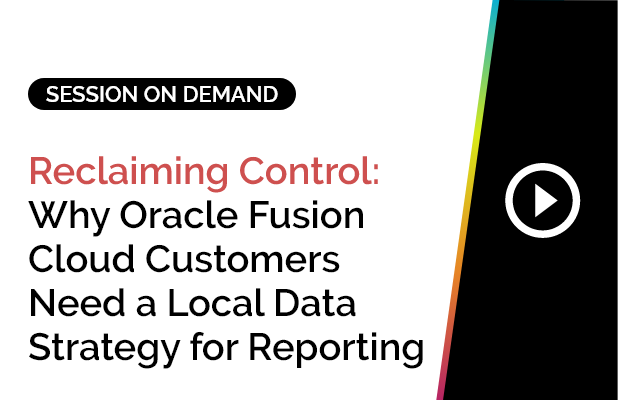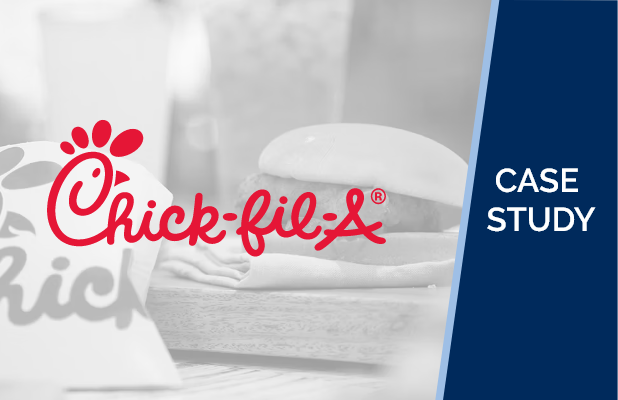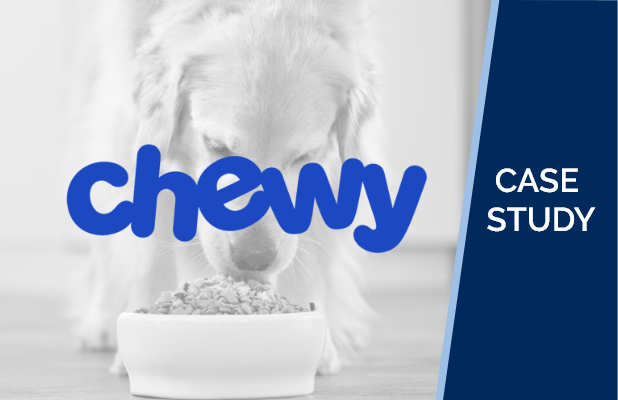Hundreds of exhibitors. Thousands of thought leaders and builders.
It’s no surprise that every year, UKG Aspire sparks new ideas.
We walk away inspired, thinking, “This could change how we work.”
But two weeks later, do those ideas get buried under dashboards, deadlines, and “urgent” HR requests?
No, the problem isn’t a lack of inspiration. But it could be a lack of follow-through. Because turning vision into value takes more than notes from a keynote. It takes discipline, data, and design.
In this blog, we tackle how to go from excitement to adoption in AI interventions in the HR domain.
The Post- UKG Aspire Reality Check
Every UKG Aspire leaves a familiar trail: excitement, discussion, maybe even a pilot project. But then, sometimes, silence.
Inspiration without infrastructure fades fast.
The truth is, the next wave of HR transformation won’t come from talking about AI. It’ll come from operationalizing it. The difference between an idea that fades and one that fuels change often lies in one thing: execution.
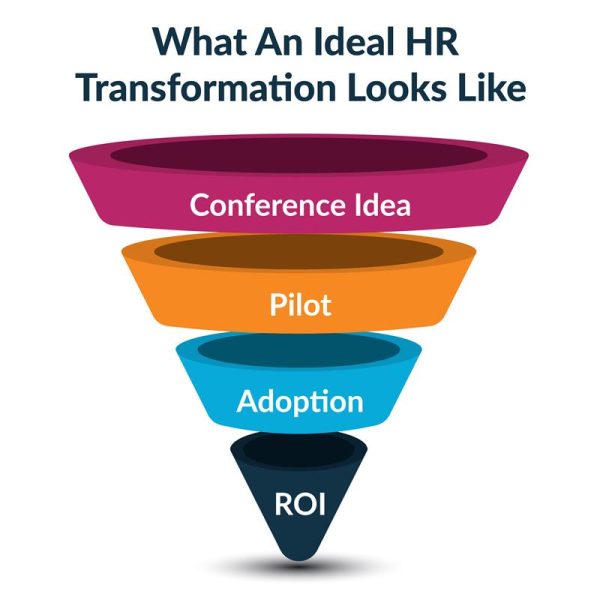
The AI Adoption Gap: Why Inspiration Stalls
HR teams don’t lack ambition. Why does post-UKG Aspire inspiration, then, fade away?
These three blockers almost always appear:
Priority Overload
Between payroll, compliance, DEI, and engagement, innovation competes with survival. When everything is a priority, transformation takes a backseat.
More than two of every five HR teams report being overwhelmed. Burnout doesn’t inspire innovation.
Pilot Fatigue
It’s easy to start AI experiments, but harder to sustain them. Most organizations get stuck at proof-of-concept.
They test, learn, and then move on before realizing measurable value. That’s precisely why 90% of AI projects, though gamechangers, eventually fail.
Data Disconnect
AI can’t learn from fragmented data. Compliance metrics sit in one system, retention data in another, and cost data in spreadsheets.
Without unified visibility, AI remains theoretical.
The issue isn’t belief in AI’s potential. It’s the lack of a structured pathway for value realization.
From Proof-of-Concept to Proof-of-Value: The 3-Stage Shift
You don’t need 10 pilots to prove success. What you do need is that one that scales. One that brings real change and isn’t just cosmetic “innovation.” Here’s the 3-stage shift leading innovative HR teams are making in how they implement AI projects.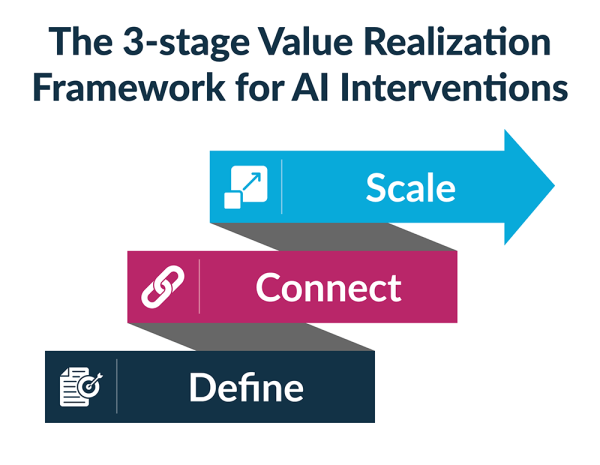
Stage 1: Define the “Why”
Start with a measurable workforce goal, one that directly connects to business impact.
Examples:
- Reduce time-to-fill by 15%.
- Cut overtime costs by 10%.
- Improve retention of critical roles by 5%.
Tip: Pick a narrow, visible use case. Visibility drives buy-in.
Stage 2: Connect the Data
AI becomes valuable when HR data stops acting in silos.
Integrate compliance, cost, and retention metrics into a single analytics layer, where insights tell a complete story.
Example:
Imagine linking predictive attrition analytics with pay equity and scheduling data. You don’t just identify who might leave. You understand why and what financial impact that decision has.
Unified data moves HR from reactive reporting to proactive workforce design.
Stage 3: Scale and Simplify
Once the value is proven, replicate it.
Automate dashboards. Set real-time alerts. Ask your AI systems questions in natural language. Then, act on them. Embed AI-driven recommendations into HR workflows.
What starts as a pilot becomes a repeatable playbook. And that becomes the robust foundation for enterprise-wide adoption.
What to Measure First: The Metrics That Matter in AI-Driven HR
Every AI project needs early signals of progress. The smartest HR teams measure four things:
| Focus Area | Example Metric | Why It Matters |
|---|---|---|
| Efficiency | Time saved per process, manual hours reduced | Shows tangible productivity gains |
| Accuracy | Compliance risks reduced, audit exceptions minimized | Builds trust and regulatory confidence |
| Engagement | Manager adoption rate, employee sentiment score | Reveals usability and real-world acceptance |
| Outcome | Retention uplift, cost-to-serve improvement | Captures bottom-line business impact |
Pro tip: Pick one leading (early indicator) and one lagging (business outcome) metric per AI initiative. That’s enough to prove ROI without overwhelming teams with data noise
Turning Insight into Everyday Practice
AI adoption doesn’t have to be disruptive – because progress must be slow and deliberate. The organizations winning the post-UKG Aspire race are the ones turning AI from a project into a practice.
They don’t treat AI as a standalone experiment. They build it into the rhythm of everyday decision-making, where insights don’t sit in reports, but flow into actions.
Here’s what that could look like in practice:
Predictive insights in scheduling and workforce planning
Instead of reacting to absenteeism or burnout, HR teams use predictive models to anticipate staffing shortfalls, overtime spikes, or compliance risks before they happen.
Over time, these insights shift workforce planning from “who’s available” to “who’s most effective,” optimizing both cost and employee well-being.
Automated compliance reporting
AI saves time, sure. But most of all, it’s a safeguard. Automated monitoring turns compliance into a living process rather than a quarterly scramble.
Audit trails, exception alerts, and real-time dashboards ensure that issues are flagged and fixed before they escalate, reducing risk while freeing HR from repetitive reporting loops.
Conversational AI for seamless data access and action
The fastest-growing adoption curve isn’t analytics dashboards, it’s AI interfaces. HR leaders are increasingly asking their systems for instant answers:
“Show me turnover trends by role.”
“What’s our diversity ratio for Q3?”
“Which department has the highest absenteeism risk?”
This self-service layer makes AI feel intuitive, and that accessibility is what drives sustained usage and adoption.
The mindset shift is subtle but profound. From “launching AI projects” to “operating AI-powered processes.”
When AI blends seamlessly into how HR decisions are made – scheduling, auditing, forecasting, planning – adoption stops being a program. It becomes muscle memory.
And that’s when transformation takes root. Quietly, consistently, and irreversibly.
Real Innovation Starts After the Conference Ends
The organizations that stand out at next year’s UKG Aspire won’t be the ones who took the most notes. They’ll be the ones who built something from them.
Here’s where to start:
- Audit your current AI pilots: Which ones can scale?
- Set 30-60-90-day milestones: Create accountability beyond inspiration.
- Partner with analytics teams: Connect compliance, cost, and retention data into a single view.
Because real innovation doesn’t happen onstage. It happens in your systems, your strategy, and your everyday decisions.
If you, like us, are ready to turn your UKG Aspire insights into measurable impact, reach out to an HR AI implementation expert today.



